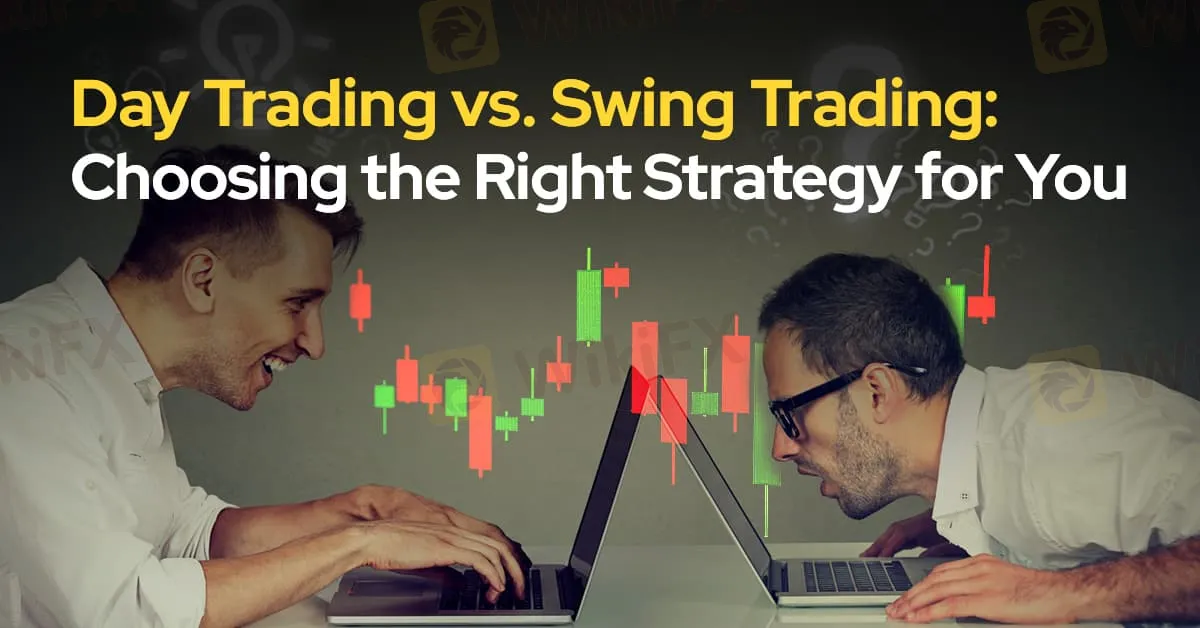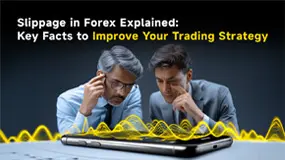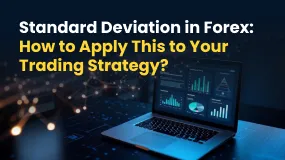简体中文
繁體中文
English
Pусский
日本語
ภาษาไทย
Tiếng Việt
Bahasa Indonesia
Español
हिन्दी
Filippiiniläinen
Français
Deutsch
Português
Türkçe
한국어
العربية
Day Trading vs. Swing Trading: Choosing the Right Strategy for You
Abstract:Regarding trading in the forex market, two popular strategies often come to mind: day trading and swing trading. Each has unique advantages and disadvantages, making it essential to understand which approach best aligns with your risk tolerance and trading style.

Regarding trading in the forex market, two popular strategies often come to mind: day trading and swing trading. Each has unique advantages and disadvantages, making it essential to understand which approach best aligns with your risk tolerance and trading style.
Day Trading: Pros and Cons
Pros:
- Quick Profits:
Day traders capitalize on short-term price movements, allowing them to realize gains (or losses) within the same day. This can lead to a series of small profits that accumulate over time.
- Less Overnight Risk:
By closing all positions by the end of the trading day, day traders avoid the risks associated with overnight market fluctuations. This is particularly important in forex, where geopolitical events can cause significant price gaps.
- Leverage Opportunities:
Day traders often use high leverage, allowing them to control larger positions with a smaller amount of capital. This can amplify gains, although it also increases potential losses.
- Variety of Strategies:
Day traders can employ various strategies, including scalping, momentum trading, and news trading, providing flexibility to adapt to market conditions.
Cons:
- Time-Intensive:
Day trading requires significant time and focus, often demanding hours of screen time to monitor trades. This can be challenging for those with full-time jobs or other commitments.
- Higher Transaction Costs:
Frequent buying and selling can lead to increased brokerage fees, which can eat into profits. Additionally, the need for quick execution may lead to slippage, further impacting profitability.
- Emotional Strain:
The fast-paced nature of day trading can be stressful. Quick decision-making in a volatile environment can lead to emotional trading, which may compromise strategy.
- Limited Market Analysis:
Day traders often rely on technical analysis and short-term indicators, which may not provide a comprehensive view of market trends.
Market Conditions:
Day trading is most effective in volatile markets where price fluctuations occur frequently, making it easier to exploit small movements. Economic news releases, market sentiment, and major currency pairs tend to present the best opportunities for day traders.

Swing Trading: Pros and Cons
Pros:
- Less Stressful:
Swing trading involves holding positions for several days or weeks, which can reduce the pressure of making quick decisions. This approach allows for more thorough analysis and planning.
- Opportunity for Bigger Moves:
By capturing larger price swings, swing traders can benefit from more significant market movements compared to day traders. This often results in fewer trades and lower transaction costs.
- Flexible Trading Schedule:
Swing traders can analyze the market and make trades at their convenience, making it easier to fit trading into a busy lifestyle.
- Comprehensive Analysis:
Swing traders can incorporate fundamental analysis along with technical analysis, giving them a broader perspective on market trends.
Cons:
- Exposure to Overnight Risk:
Holding positions overnight exposes swing traders to potential market gaps or adverse moves that can occur outside of trading hours. This is particularly relevant for forex markets that react to global events.
- Slower Returns:
Profits take longer to materialize, which may not suit traders looking for immediate gains. Patience is essential for success in swing trading.
- Requires Discipline:
Swing traders must remain disciplined and avoid the temptation to close positions prematurely for smaller profits, which can disrupt the overall trading strategy.
Market Conditions:
Swing trading works best in trending markets where price movements show a clear direction over several days. Ideal conditions include established trends and patterns, which provide opportunities for entry and exit points.
Choosing the Right Strategy
Selecting between day trading and swing trading largely depends on your risk tolerance and trading style:
- Risk Tolerance:
Assess your comfort level with risk. If you prefer less risk and can handle waiting for trades to develop, swing trading may be more suitable. Conversely, if you can tolerate higher risk for the potential of quicker profits, day trading could be your best bet.
- Time Commitment:
Consider how much time you can dedicate to trading. Day trading requires constant monitoring and quick decision-making, while swing trading allows for a more relaxed approach. If you have limited time, swing trading might be a more feasible option.
- Personality:
Reflect on your personality. If you thrive under pressure and enjoy fast-paced environments, day trading may appeal to you. On the other hand, if you prefer a methodical approach and enjoy analyzing longer-term trends, swing trading might be a better fit.
- Financial Goals:
Consider your financial goals and desired income from trading. Day trading may yield quicker returns but requires consistent success to be profitable. Swing trading, while potentially slower, can lead to significant gains over time with fewer trades.
Conclusion
Day and swing trading have their merits, and the best choice depends on your circumstances. By evaluating your risk tolerance, time commitment, and personality, you can make an informed decision that aligns with your trading goals. Ultimately, the right strategy can help you navigate the forex market more effectively and enhance your overall trading experience.
Before diving into either strategy, consider practicing on a demo account to gain experience without risking real capital. This will allow you to better understand each approach's dynamics and help you determine which strategy resonates most with your trading style.

Disclaimer:
The views in this article only represent the author's personal views, and do not constitute investment advice on this platform. This platform does not guarantee the accuracy, completeness and timeliness of the information in the article, and will not be liable for any loss caused by the use of or reliance on the information in the article.
Read more

A Guide to Determining the Optimum Forex Leverage
Want to gain a wider forex market position control by investing a minimal amount? Consider using leverage in forex. It implies using borrowed funds to raise your trading position more than your cash balance can let you do it. Forex traders usually employ leverage to churn out profits from relatively small currency pair price changes. However, there is a double-edged sword with leverage since it can multiply profits as well as losses. Therefore, using leverage in the right amount is key for traders. Forex market leverage can be 50:1 to 100:1 or more, which remains significantly greater than the 2: leverage usually offered in equities and 15:1 leverage in futures.

Slippage in Forex Explained: Key Facts to Improve Your Trading Strategy
Have you witnessed a difference between the expected price of a trade and the price at which it is executed in real time? This might be due to slippage, which can happen at any time. However, it prevails mostly when the market remains highly volatile. At the same time, it can also happen during large order executions. Read on to know more about slippage, its impacts, and the strategies to rein in adverse effects.

Forex Trading Account Types and Their Features: Read This Insightful Guide
Want to open a forex account to enjoy the thrill of compounding returns? You should first know the various forex trading account types. Choosing the right option from the list of forex accounts is critical to experiencing a hassle-free and successful trading journey. Forex brokers design trading accounts based on your needs, trading experience, and financial goals. Therefore, understanding each forex trading account type and its key features becomes essential.. This will help you make the right choice. In this article, we have discussed everything about forex accounts. Take a look!

Standard Deviation in Forex: How to Apply This to Your Trading Strategy?
Do you recall the concept of standard deviation being taught in your school days? The concept, which measures the variation within a set of data points relative to the mean average of the dataset. A greater standard deviation hints at higher variability. On the other hand, a lower standard deviation means lower variability from the mean. But what is standard deviation in forex, and how can you apply it to your trading strategy? This is what we will discuss here.
WikiFX Broker
Latest News
BASF CEO: EU CO₂ Trading Is A "Destruction Mechanism" For European Industry
PINAKINE Broker India Review 2025: A Complete Guide to Safety and Services
Is Inzo Broker Safe or a Scam? An Evidence-Based Analysis for Traders
Is Uniglobe Markets Legit? A 2025 Simple Guide to Its Safety, Services, and User Warnings
Is Forex Zone Trading Regulated and Licensed?
WikiEXPO Dubai 2025 “Welcome Party” Kicks Off Tonight!
He Trusted a WhatsApp Group and Lost RM659,000
Exness Restricted Countries List 2025 Explained
Zetradex Exposed: Withdrawal Denials, Account Freeze & Bonus Issues Hurt Traders
Is Fyntura a Regulated Broker? A Complete 2025 Broker Review
Currency Calculator



